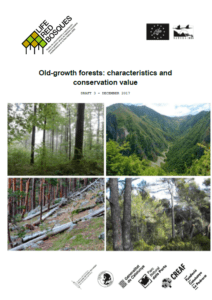“Old-growth forests: characteristics and conservation value” by EUROPARC Spain
“Primeval forests”, that is to say, those that have evolved throughout their entire history without human intervention, are now extremely scarce. Old-growth forests with a certain degree of maturity and a low human impact can still be found locally – however, in the Mediterranean basin, is it estimated to represent only 2% of the original forests.
Due to their extreme scarcity, their complexity and the biodiversity they host, old-growth forests are a key issue in conservation policies. The EU is currently moving towards a common strategy for mature forests, and progress is being made in several countries concerning its identification and protection.
Old-growth forests manual: characteristics and conservation value
In Spain, old-growth forests are one of the central focus of RedBosques, a 3 year Life project, coordinated by EUROPARC Spain, under which a new manual has just been produced. The “Old-growth forests: characteristics and conservation value” manual – also available in English – provides an exhaustive review of the scientific state of the art on forest maturity and its different meanings, and synthesizes the most significant and observable characteristics of old-growth stands. Finally, it describes biodiversity levels within old-growth forests and identifies species that are indicators of forest maturity.

Get some background on the RedBosques project beginnings in our article here. Follow how RedBosques project approaches its challenging objectives via EUROPARC Spain’s Twitter, Facebook and the LIFE project website – and make sure you don’t forget to share their outputs!
The project is coordinated by EUROPARC Spain (José Antonio Atauri) and Fundación Fernando González Bernáldez.